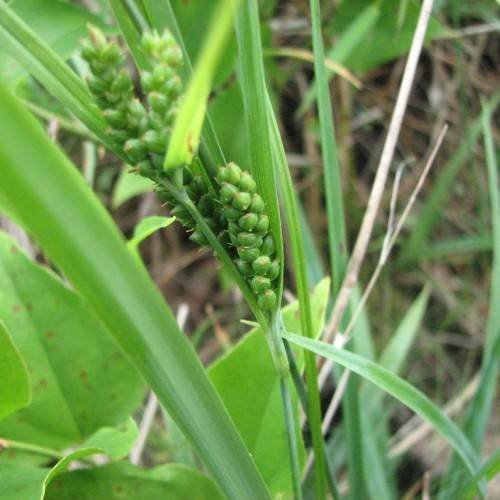
Blue Sedge
Carex glaucodea
Watering:
Average
Hardiness Zone:
Flowers:
Flowers
Sun:
full sun,part shade
Soil:
Sand
Fruits:
Fruits Ready In Fall
Leaf:
Yes
Growth Rate:
Low
Drought Tolerant:
Yes
Salt Tolerant:
Yes
watering
Sedge (Carex glareosa subsp. glareosa x) prefer moist, well-drained soils, so it is important to keep the soil evenly moist during the growing season. Water the plant deeply at least once a week, providing enough water to moisten the soil to a depth of several inches. In periods of extreme heat or drought, you may need to water more frequently. In winter, the plant requires much less water, but do not let the soil dry out completely.
sunlight
Sedge (Carex glareosa subsp. glareosa x) is a plant species that thrives best in full sunlight. It requires 8-10 hours of direct sunlight each day during the growing season. It is recommended that the plant be grown in an area with abundant sunshine to really let its colors and foliage pop. The plant prefers temperatures between 55-80 degrees Fahrenheit, and its best to avoid exposing it to temperatures below 45 degrees Fahrenheit. Sedge (Carex glareosa subsp. glareosa x) can tolerate partial shade, though it will not reach its full potential in such conditions. It is important to note that while Sedge enjoys full sunlight, it is best to give it several hours of shade during the hottest part of the day. This will prevent the plant from overheating, which can stunt its growth. Overall, Sedge requires full sunlight for 8-10 hours each day during the growing season, with an additional several hours of shade during the hottest part of the day.
pruning
For best results with Sedge (Carex glareosa subsp. glareosa x), prune in early spring. Pruning should be done lightly and selectively - no more than 1/3 of the foliage should be trimmed at 1 time. Prune to control size, maintain form, or to stimulate new growth. For a more informal look, selectively trim the tips of the foliage blades. Some flowering varieties may require removing spent blooms to encourage additional flowering.
